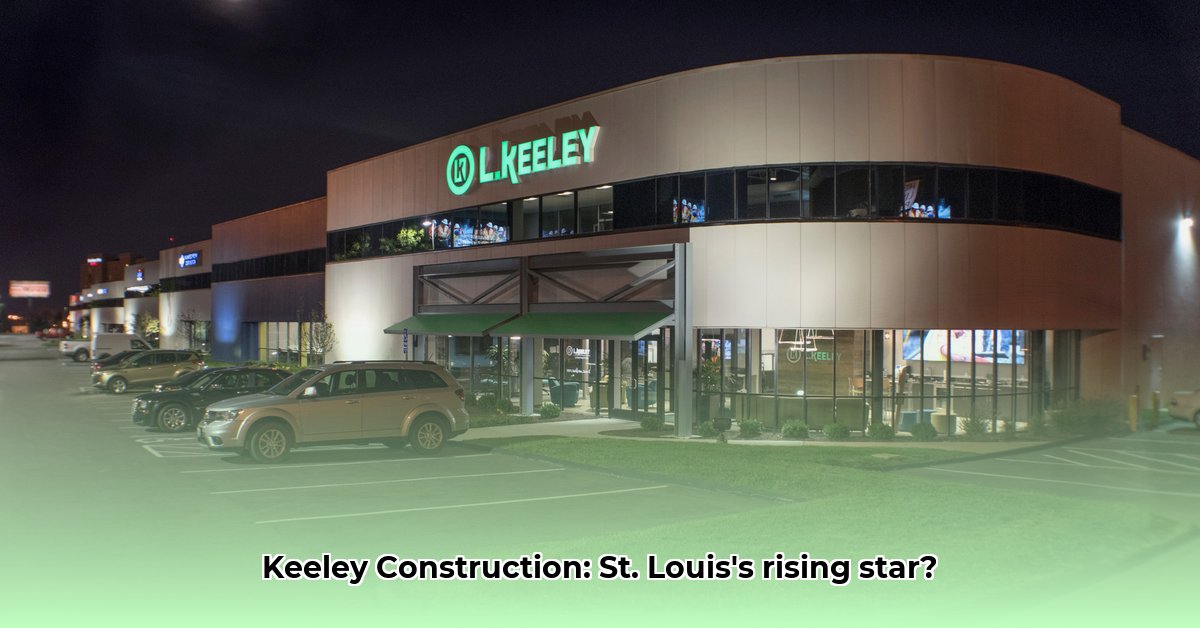
Keeley Construction stands as a prominent example of a thriving family-owned business in the competitive St. Louis construction market. Its success story is one of strategic diversification, a strong company culture, and a proactive approach to risk management. But how has Keeley achieved this, and what does the future hold? This case study examines Keeley's journey, exploring its accomplishments, challenges, and plans for continued growth.
From Roads to Skyscrapers: Diversification and Strategic Growth
Keeley Construction’s journey began with a focus on road construction. However, recognizing the inherent risks of market volatility within a single sector, the company strategically diversified its portfolio. This expansion into building construction, industrial projects, and civil engineering has proven crucial in mitigating economic downturns. By diversifying its services, Keeley has created a more resilient business model, much like a table supported by multiple strong legs – if one area falters, others can compensate. This adaptable approach has been key to their sustained success.
A Family-First Culture: The Human Element of Success
Beyond its impressive project portfolio, Keeley’s success is deeply rooted in its family-owned culture. This isn’t simply a marketing tactic; it’s a core principle that permeates the company's operations. The emphasis on employee well-being, shared responsibility, and a results-oriented approach fosters a powerful team spirit. This strong internal culture translates directly into high-quality work and satisfied clients. "Our family-first approach isn't just about feeling good; it's about building a team that works together seamlessly," says [Insert Full Name and Title], [Position] at Keeley Construction. This positive work environment improves retention and fosters a sense of ownership amongst employees.
Shaping the St. Louis Skyline: Impactful Projects and Community Engagement
Keeley Construction has left its mark on the St. Louis skyline, contributing to the city's infrastructure and development. While specific details on individual projects may be confidential, a review of their portfolio reveals a wide range of successful undertakings across the city. These projects not only demonstrate the company's expertise but also showcase their commitment to improving the St. Louis community. Their work contributes significantly to the city's landscape and economic growth. Have you noticed the tangible impact Keeley's projects have on the city's infrastructure?
Navigating Challenges: Risk Management and Future Opportunities
The construction industry presents numerous challenges. Economic downturns, fierce competition, and attracting skilled workers are constant concerns. However, Keeley proactively addresses these risks through a well-defined risk management strategy. How effective is it? Their strategy, highlighted in the risk assessment matrix below, demonstrates their preparedness:
| Risk Category | Likelihood | Impact | Mitigation Strategy |
|---|---|---|---|
| Economic Slowdown | Moderately Likely | Significant | Diversify projects, maintain strong financial reserves |
| Competition | Very Likely | Moderate | Improve brand recognition, offer unique services |
| Regulatory Changes | Moderately Likely | Moderate | Stay compliant, actively engage with industry regulators |
| Worker Shortages | Very Likely | Significant | Invest in recruiting and keeping good employees |
| Supply Chain Issues | Very Likely | Moderate | Diversify suppliers, build strong supplier partnerships |
This proactive approach allows them to mitigate potential disruptions and capitalize on emerging opportunities. The future promises continued growth for Keeley, built on its strong foundation.
A Sustainable Future: Growth Strategies and Legacy Building
Keeley Construction’s future is promising. Their established track record, coupled with its strategic diversification, strong culture, and effective risk management, positions them for sustained success. Their future plans likely involve strategic investments in expansion, innovation, and employee development, fostering a sustainable growth trajectory. Keeley's story serves as a compelling case study of how a family-owned company can not only survive but also thrive in a competitive industry, emphasizing the importance of employee well-being, and strategic planning for long-term growth and a commitment to community development. Further analysis of their market positioning and future project pipelines would provide even more insight into their projected success.